A native or restored prairie in full late summer glory is gorgeous, but I also have a soft spot for wildflowers that can survive some of the toughest conditions humans have inflicted on the landscape. Today’s featured plant flourishes in overgrazed pastures and on roadsides with poor soil, and is native to most of the continental United States. After the jump I’ve posted several pictures of Hoary vervain (Verbena stricta), which blooms across most of Iowa from late June to September.
This post is also a mid-week open thread: all topics welcome.
Hoary vervain plants are typically between 1 and 4 feet tall, with a hairy stem, hairy leaves, and floral spikes at the top of the stems. The Illinois Wildflowers website notes, “The floral spikes bloom from the bottom up; relatively few flowers are in bloom at the same time.” You have a good chance of seeing these purple (sometimes blue or pink) flowers throughout the summer, as the lower blossoms give way to ones higher up on the stem.
Sometimes the stems of hoary vervain are reddish rather than green.
A wide variety of insects visit hoary vervain flowers or feed on the foliage. Some birds eat the seeds, but few mammals will eat the leaves and stems.
In this shot of a prairie planting in one of the Gray’s Lake parking lots, hoary vervain grows near many other native plants. The orange blossoms are butterfly milkweed. Near the upper left, you can see rattlesnake master, seed pods from a false indigo, and prairie purple clover flowers. Wild petunias are blooming in the lower right corner.
Here’s another picture taken near Gray’s Lake in July. This one shows hoary vervain with daisy fleabane (white rays and yellow centers), and some non-native red and white clover, which have become widespread across Iowa.
Here’s some hoary vervain growing near a clump of common St. John’s Wort along the Meredith bike trail in Des Moines.
Sylvan Runkel and Dean Roosa write in Wildflowers of the Tallgrass Prairie,
The vervains are ranked as weeds by many people because they are coarse, generally unpalatable plant that thrive in dry, open habitats. Their extensive underground root systems protect these plants from severe conditions and help them act as soil anchors in eroded situations.
Vervains are among the most persistent members of the prairie flora and are common on degraded prairies. They increase in abundance when habitats are disturbed.
Former prairie habitats don’t come much more disturbed than this one:
Not long after I took that picture in late June, I noticed that the DOT had cut these plants down when mowing the overpass. Nevertheless, I’ll bet hoary vervain will grow back in the same area next summer.
Of the many plants in the verbena family, hoary vervain most closely resembles blue vervain, another tallgrass prairie native. The Minnesota Wildflowers website explains how to tell the difference:
Vervain has smaller flowers, its leaves are long and narrow rather than oval, and it prefers moist habitats. The square stem and opposite leaves may also confuse Hoary Vervain with a member of the Mint family.

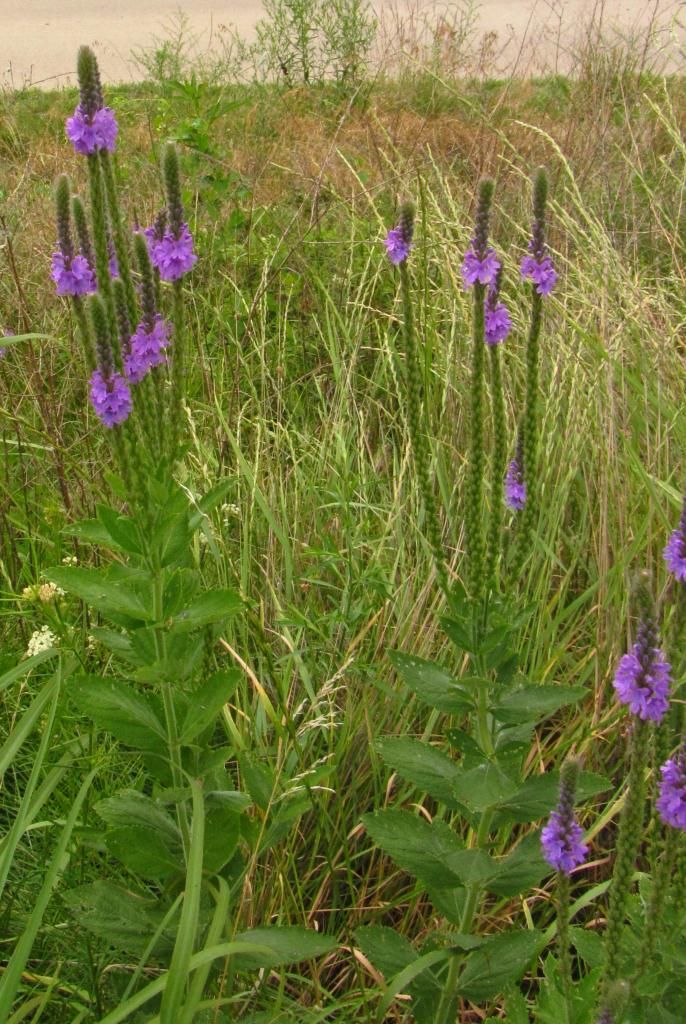
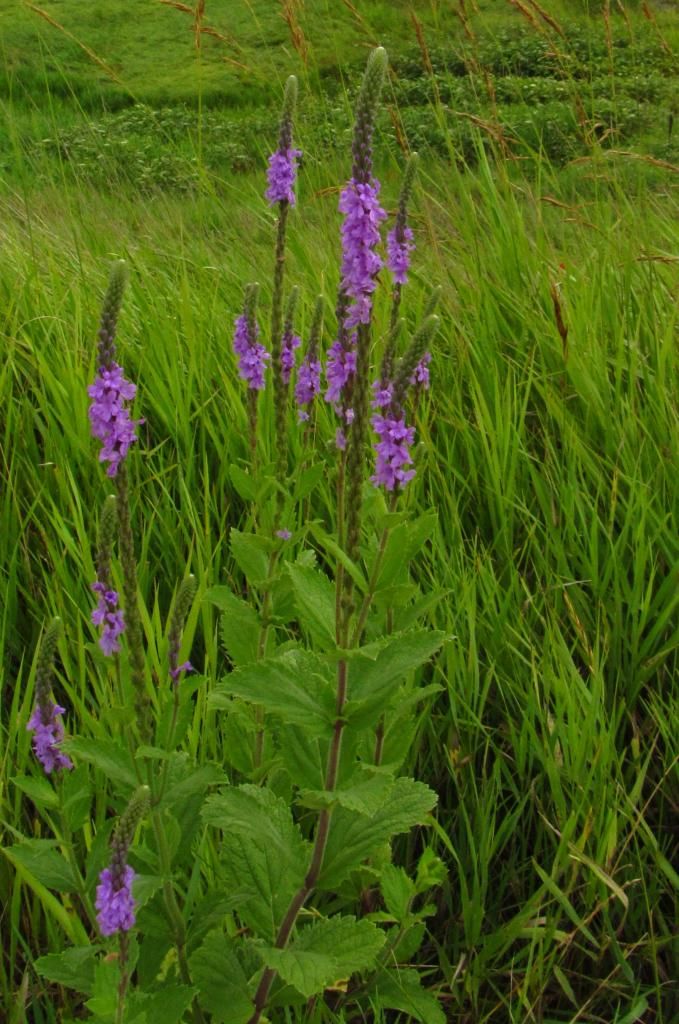
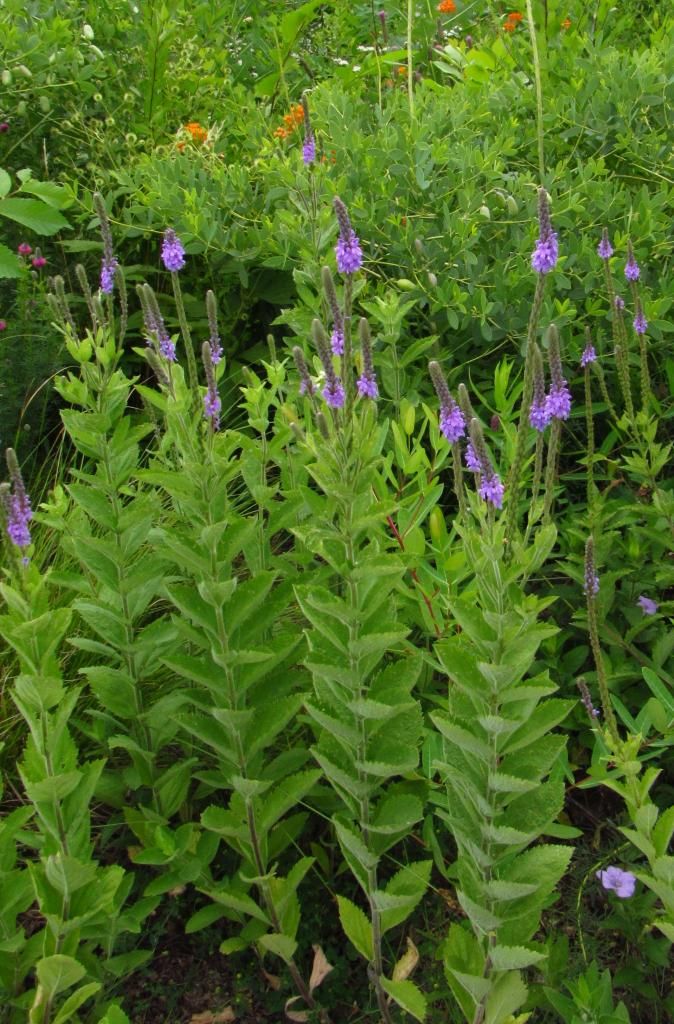
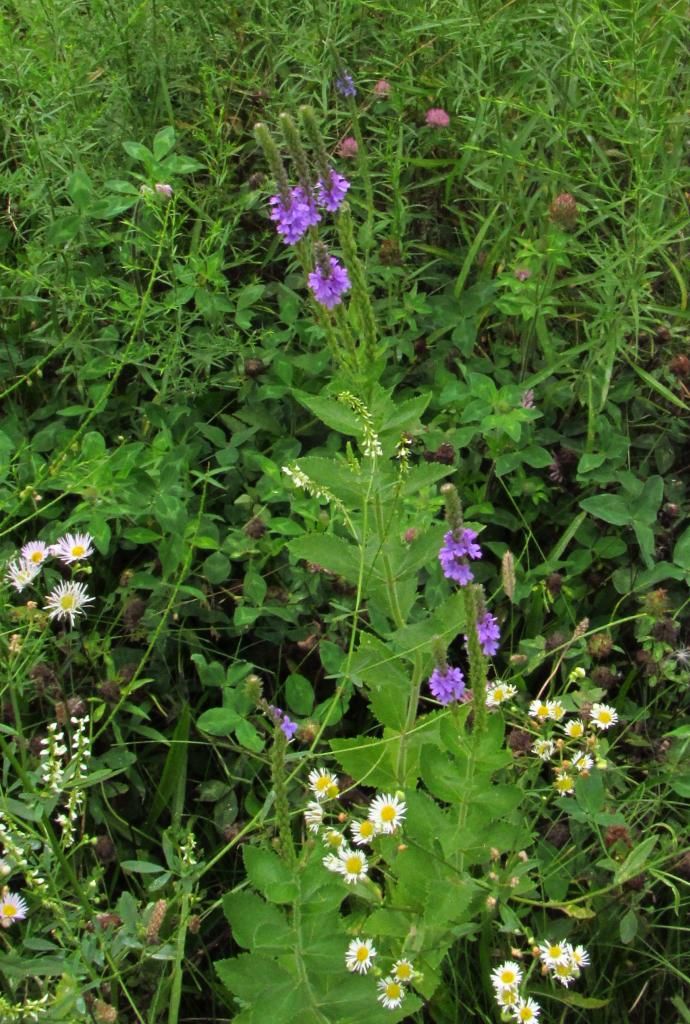
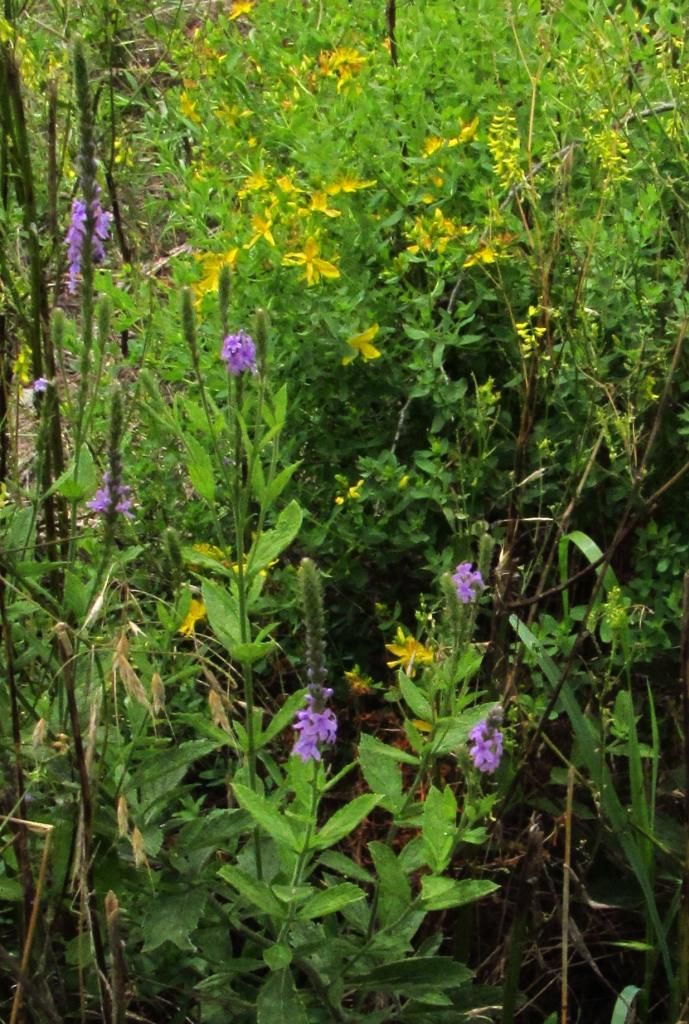

1 Comment
Helpful prairie finder
Hoary vervain is one of the flowers a person can look for when trying to determine whether a pasture might be an original prairie that can be restored. Rule One of prairie restoration is to never spray or till an area of perennial vegetation in order to plant a prairie unless/until one is sure that the area is not already an original prairie. Heavily-grazed pastures can sometimes have surprising native survivors.
PrairieFan Sun 30 Apr 1:03 AM